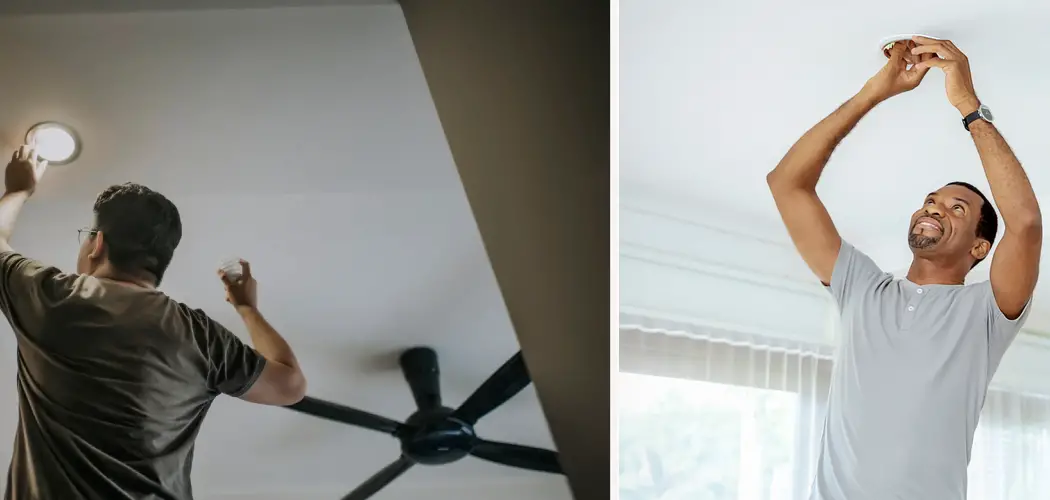Flickering recessed lights can be not only annoying but also a sign of an underlying electrical issue. If you notice your recessed lights flickering, it is important to address the problem as soon as possible to prevent any potential hazards or damage.

The main advantage of fixing flickering recessed lights is the ability to save money. Hiring a professional electrician can be quite expensive, and being able to troubleshoot and fix common lighting problems on your own can result in significant cost savings. Additionally, fixing the issue yourself means you won’t have to wait for an appointment or work around someone else’s schedule. In this blog post, You will learn in detail how to fix flickering recessed lights.
Step-by-Step Instructions for How to Fix Flickering Recessed Lights
Step 1: Inspect the Light Bulb
If your recessed lights are flickering, the first thing you should do is check the light bulb. Make sure it is screwed in tightly and that there are no loose connections. If the light bulb looks fine, try swapping it out with a new one to see if that solves the problem.
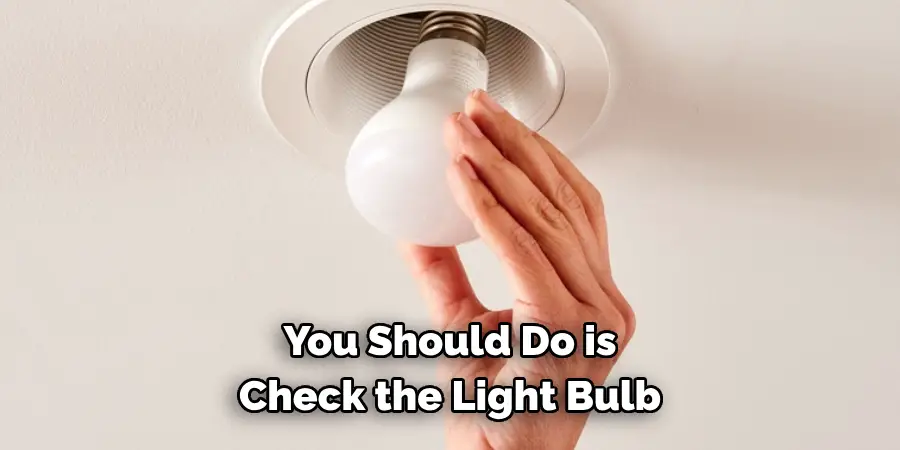
Step 2: Check for Loose Wires
Next, you should inspect the wiring of your recessed lights. Turn off the power to the lights at the circuit breaker and carefully remove the light fixture from the ceiling. Check for any loose wires or connections and tighten them if necessary. Loose wires can cause flickering lights and can even be a fire hazard.
Step 3: Clean the Light Fixture
Dust and debris buildup on the light fixture can also cause flickering lights. Use a soft cloth or duster to gently clean the inside and outside of the fixture. Make sure to turn off the power before cleaning and never use water or cleaning products directly on the fixture.
If your recessed lights are connected to a dimmer switch, it could be the cause of the flickering. Try adjusting the dimmer switch and see if that changes anything. If not, you may need to replace the switch or have an electrician take a look.
Step 4: Check for Overloaded Circuit
If your recessed lights are on the same circuit as other appliances or fixtures, it could be causing an overload. This can result in flickering lights and can also be a safety hazard. Try unplugging some devices or turning off other lights to see if that solves the problem.
If you are still experiencing flickering lights after trying the above steps, it may be time to upgrade your light bulbs. LED bulbs are known for their longevity and energy efficiency, which can also help reduce flickering. They may be a more expensive upfront cost, but in the long run, they can save you money on energy bills and frequent bulb replacements.
Step 5: Install a Voltage Stabilizer
In some cases, voltage fluctuations can cause recessed lights to flicker. Installing a voltage stabilizer can regulate the electricity flow and prevent flickering. This is a more complex and expensive solution, so it may be best to consult an electrician before attempting this.
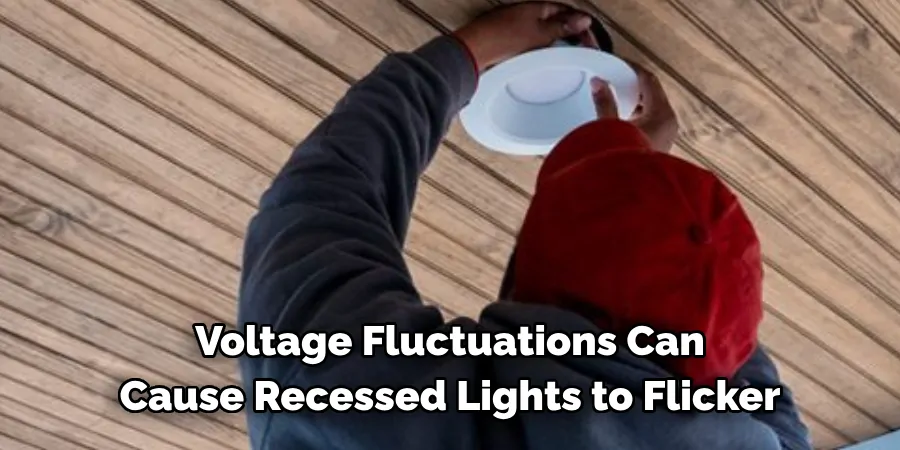
The junction box is where all of the electrical connections for your recessed lights are located. If there are any loose connections, it can cause flickering lights. Turn off power to the lights at the circuit breaker and carefully inspect the junction box for any loose wires or connections. Tighten them if necessary.
Step 6: Contact a Professional
If you have tried all of the above steps and your recessed lights are still flickering, it may be time to call in a professional electrician. They can diagnose the issue and make any necessary repairs or replacements.
If all else fails, it may be time to replace your recessed light fixture altogether. Over time, fixtures can become worn out and damaged, leading to flickering lights. Consult with an electrician or do research on how to safely and properly install a new fixture.
By following these step-by-step instructions, you should be able to fix flickering recessed lights and enjoy a well-lit and comfortable space. Remember to always prioritize safety and consult a professional if needed.
Safety Tips for How to Fix Flickering Recessed Lights
- Always turn off the power at the circuit breaker before inspecting or making any repairs to recessed lights.
- Make sure to handle light bulbs with care and never touch them while they are on or hot.
- Use caution when cleaning light fixtures and avoid using water or cleaning products directly on them.
- If unsure about any electrical work, consult a professional electrician for guidance and assistance.
- Avoid overloading circuits by unplugging devices or turning off other lights when experiencing flickering lights.
- Consider upgrading to LED bulbs for longer-lasting and more energy-efficient lighting.
- If installing a voltage stabilizer or replacing the light fixture, make sure to follow proper safety procedures and consult a professional if needed.
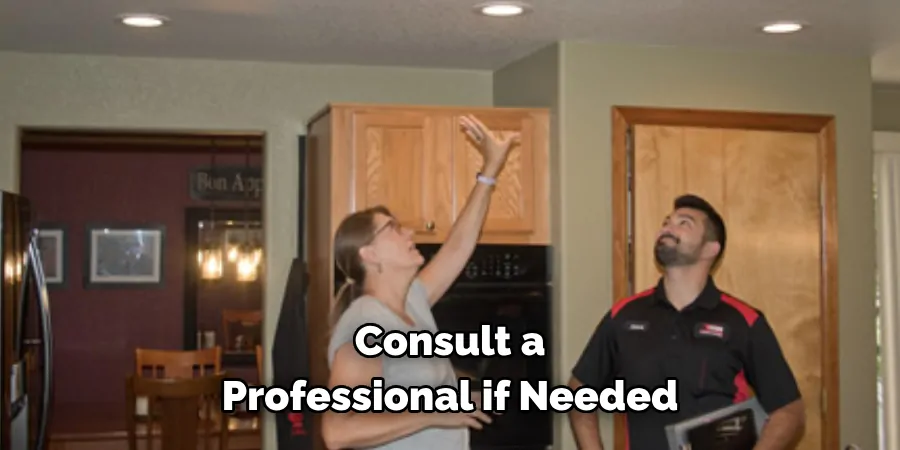
By following these safety tips, you can prevent accidents and ensure a successful fix for your flickering recessed lights. Remember, safety should always be the top priority when dealing with electricity. Keep these precautions in mind to avoid any potential hazards.
Causes Flickering in Recessed Lights
- Loose connections: The most common cause of flickering in recessed lights is loose connections, either at the fixture or in the wiring. These can occur due to wear and tear over time, or from poor installation practices.
- Faulty bulbs: Another common culprit for flickering lights is faulty bulbs. If a bulb is not properly screwed in or has a loose connection, it can cause flickering. It’s important to make sure all bulbs are securely in place.
- Overloaded circuit: If your recessed lights share a circuit with other appliances or fixtures that draw a lot of power, this can lead to flickering as the circuit becomes overloaded. Consider moving some devices to a different circuit or upgrading your electrical panel.
- Voltage fluctuations: Fluctuations in voltage can also cause recessed lights to flicker. This can happen due to issues with the power supply or wiring, and may require a professional electrician to diagnose and fix.
- Dimmer switch compatibility: Not all dimmer switches are compatible with LED bulbs, which are commonly used in recessed lighting. If your lights are flickering when connected to a dimmer switch, try replacing it with a compatible one.
- Dirty or corroded connections: Over time, dirt and corrosion can build up on electrical connections, causing them to become less effective. This can lead to flickering in recessed lights, and may require cleaning or replacing the affected connections.
- Old wiring: If your home has old or outdated wiring, this can also contribute to flickering in recessed lights. It may be necessary to upgrade the wiring in your home to prevent further issues with flickering and ensure safety.
By understanding the common causes of flickering in recessed lights, you can take steps to prevent and fix this issue. Regular maintenance, proper installation practices, and using compatible components can all help to keep your recessed lights functioning properly without any pesky flickering.
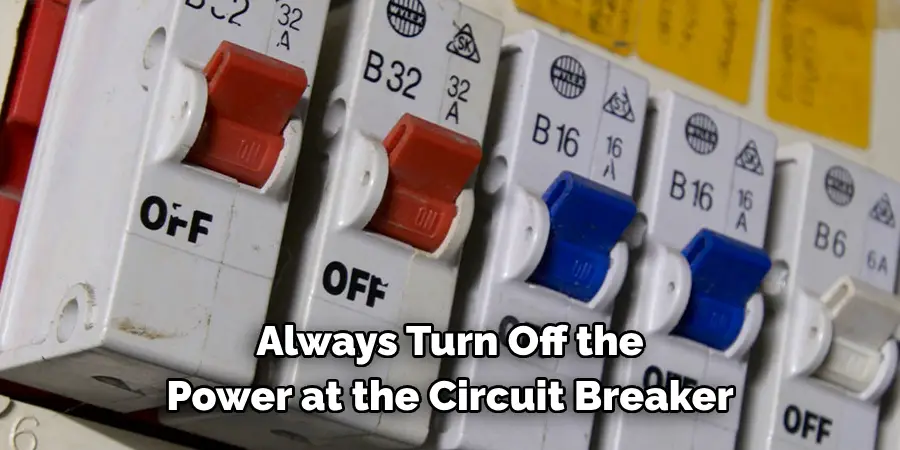
How Do You Troubleshoot Flickering Recessed Lights?
Recessed lights are a popular choice for homeowners and businesses alike due to their sleek design and versatility. However, one common issue that can arise with recessed lights is flickering. This can be quite frustrating as it not only affects the lighting quality but also creates a potential safety hazard. Fortunately, there are steps you can take to troubleshoot and fix this problem.
Identifying the Cause of Flickering Lights
Before you can fix the issue, it’s important to determine what is causing the flickering. Here are some common causes of flickering recessed lights:
- Loose Bulbs: The first thing to check is whether the bulbs are properly screwed in. Sometimes, loose bulbs can cause flickering lights.
- Incompatible Dimmer Switch: If you have a dimmer switch installed, make sure it is compatible with the type of bulb you are using. Using an incompatible dimmer switch can lead to flickering lights.
- Faulty Wiring: If the wiring is old or damaged, it can cause flickering lights. It’s important to have a professional electrician check and repair any faulty wiring.
- Overloaded Circuit: If too many lights are connected to the same circuit, it can cause flickering due to voltage drop.
- Poor Quality Bulbs: Using poor quality bulbs or mixing different brands can also cause flickering lights.
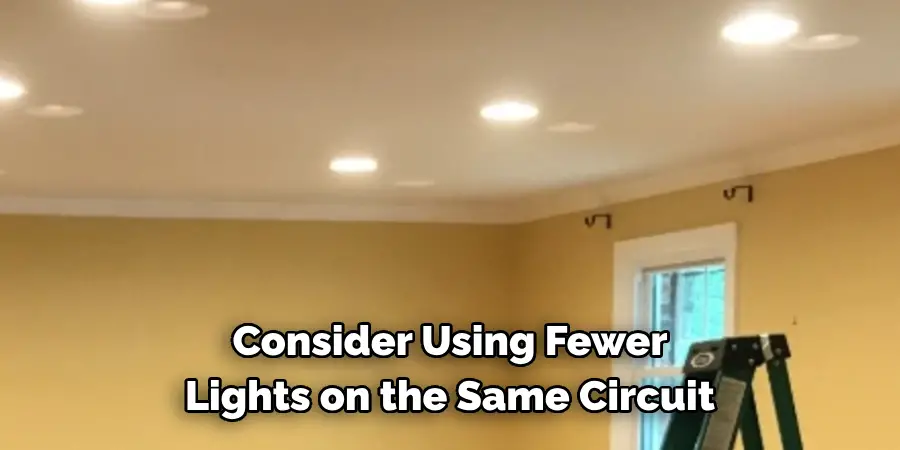
Troubleshooting Flickering Recessed Lights
Once you have identified the cause of the flickering, here are some steps you can take to troubleshoot the issue:
- Tighten Bulbs: Start by making sure all bulbs are tightly screwed in. If a bulb is loose, gently tighten it with your hand.
- Replace Dimmer Switch: If the dimmer switch is causing the issue, try replacing it with a compatible one.
- Check Wiring: If you suspect faulty wiring, have an electrician check and repair it.
- Use Fewer Lights: To avoid overloading the circuit, consider using fewer lights on the same circuit or installing additional circuits.
- Replace Bulbs: If poor quality bulbs are causing the flickering, replace them with higher-quality ones from a reputable brand.
Preventing Flickering Lights
To prevent flickering lights in the future, here are some tips to keep in mind:
- Use Compatible Dimmer Switches: When installing dimmer switches, make sure they are compatible with the type of bulb you are using.
- Use Quality Bulbs: Invest in high-quality bulbs from reputable brands to prevent flickering and ensure long-lasting lighting.
- Avoid Overloading Circuits: Be mindful of how many lights are connected to the same circuit to avoid voltage drop and potential flickering.
- Schedule Regular Maintenance: Regularly check and maintain your recessed lights to catch any issues early on and prevent potential flickering.
- Consider LED Bulbs: LED bulbs are known for their longevity and energy efficiency, making them a great option for preventing flickering lights in the long run.
Flickering recessed lights can be frustrating, but with the right troubleshooting steps, you can fix the issue and prevent it from happening in the future. Remember to always prioritize safety and consult a professional if you are unsure about any electrical issues. With proper maintenance and using compatible and high-quality equipment, you can enjoy reliable and steady lighting from your recessed lights.
Can You Fix the Issue of Flickering Recessed Lights Without Calling a Professional Electrician?
While it is always recommended to consult a professional electrician for any electrical issues, there are some cases where you may be able to fix the issue of flickering recessed lights on your own. However, this should only be attempted if you have some knowledge and experience with electrical work and feel confident in doing so.
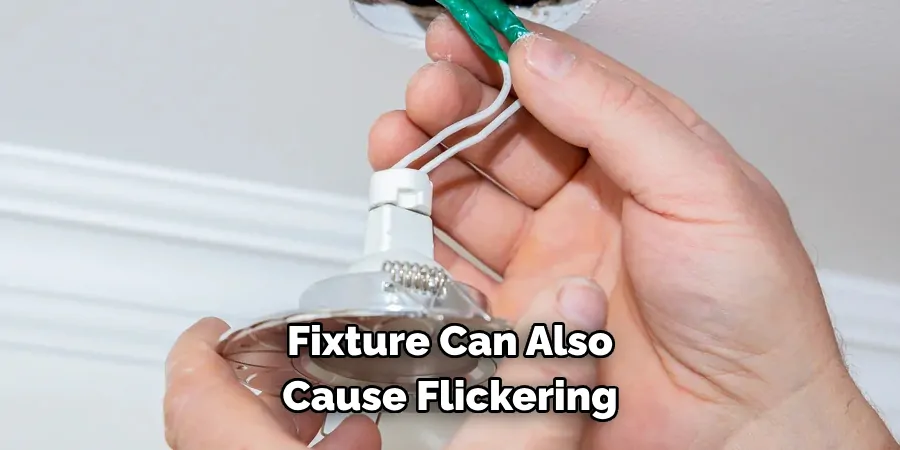
Otherwise, it is best to leave it to the professionals to ensure safety and proper repairs. Remember, the cost of hiring a professional may be worth it in the long run if it prevents any potential accidents or further damage. So, assess your skills and knowledge before attempting to fix flickering recessed lights on your own. If in doubt, always seek help from a licensed electrician.
How Can You Prevent Future Occurrences of Flickering in Your Recessed Lights?
After troubleshooting and fixing the flickering issue in your recessed lights, you may wonder what steps you can take to prevent it from happening again in the future. Here are some tips to help prevent future occurrences of flickering in your recessed lights:
- Use High-quality Bulbs: Low-quality or defective light bulbs can often cause flickering issues. Make sure to purchase bulbs from reputable brands and check for any defects before installation.
- Avoid Overloading the Circuit: If you have multiple recessed lights on the same circuit, make sure not to overload it with too many lights or other electronics. This can cause voltage fluctuations and lead to flickering issues.
- Check for Loose Connections: Loose connections between the wiring and the fixture can also cause flickering. Make sure all connections are secure and tight.
- Use a Compatible Dimmer Switch: If you have recessed lights that are dimmable, make sure to use a compatible dimmer switch. Using an incompatible one can cause flickering or even damage to the lights.
- Keep Fixtures Clean: Dust and debris can accumulate in recessed light fixtures over time, causing poor connections and flickering. Make sure to clean the fixtures regularly to prevent this from happening.
- Consider Using LED Bulbs: LED bulbs are not only energy-efficient but also less prone to flickering compared to incandescent or halogen bulbs.
- Consult a Professional: If you’re experiencing persistent flickering in your recessed lights, it’s best to consult a professional electrician. They can help identify any underlying issues and provide solutions to prevent future occurrences.
By following these tips, you can significantly reduce the chances of flickering in your recessed lights and enjoy uninterrupted lighting in your home or workspace. Remember to always prioritize safety when dealing with electrical fixtures and consult a professional if needed.
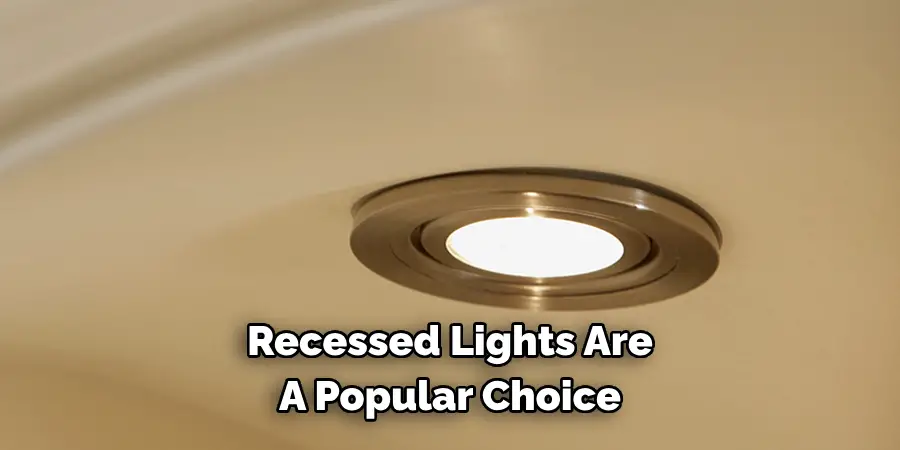
Alternative Solutions for Fixing Flickering Recessed Lights
Aside from the usual troubleshooting methods and replacing bulbs or wiring, there are several alternative solutions that can help fix flickering recessed lights. These solutions may not necessarily address the root cause of the problem, but they can temporarily solve the issue until a more permanent solution is implemented.
1. Use a Dimmer Switch
One simple solution is to install a dimmer switch for your recessed lights. Flickering can occur when the voltage fluctuates, and a dimmer switch can help stabilize the voltage by adjusting the amount of electricity flowing through the circuit. This may not completely eliminate flickering, but it can reduce its frequency.
2. Install a Stabilizing Capacitor
Another option is to install a stabilizing capacitor in the lighting circuit. This electronic component can regulate the voltage and prevent flickering. However, this solution may require the help of an electrician as it involves modifying the wiring.
3. Clean or Replace Light Bulb Contacts
Sometimes, flickering can occur due to dirty or loose light bulb contacts. A simple solution would be to clean the contacts with a cloth or replace them altogether. This can help improve the connection and reduce flickering.
4. Use LED Light Bulbs
LED light bulbs are known for their energy efficiency, but they also have another benefit – they do not flicker like traditional incandescent bulbs. If you are constantly experiencing flickering with your recessed lights, consider switching to LED bulbs.
5. Check for Voltage Issues
If you have ruled out all other possible causes, it might be worth checking the voltage in your home. Fluctuations in voltage can cause flickering lights, so it is important to ensure that your electrical system is working properly.
6. Seek Professional Help
If none of these alternative solutions seem to work, it may be time to seek professional help. An electrician can thoroughly inspect your wiring and electrical system to identify the root cause of the flickering lights and provide a proper solution.
These solutions may not address the underlying issue, but they can provide temporary relief until a permanent solution is implemented. If you are unable to fix the problem on your own, it is always best to seek professional help for safety reasons.
Conclusion
In conclusion, flickering recessed lights can be a frustrating and potentially dangerous issue in your home. However, with the right knowledge and tools, it is possible to fix this problem on your own.
One of the main disadvantages of trying to fix flickering recessed lights is that it can be time-consuming and challenging. It may require multiple attempts to figure out the root cause of the issue and find the correct solution. This can be frustrating, especially for those who are not familiar with electrical work.
Another disadvantage is that attempting to fix flickering recessed lights without proper knowledge or experience can be dangerous. Working with electricity requires caution and expertise, and any mistakes can lead to electrocution or fire hazards. It is always recommended to seek professional help if you are not confident in your abilities.
I hope this article has been beneficial for learning how to fix flickering recessed lights. Make Sure the precautionary measures are followed chronologically.

